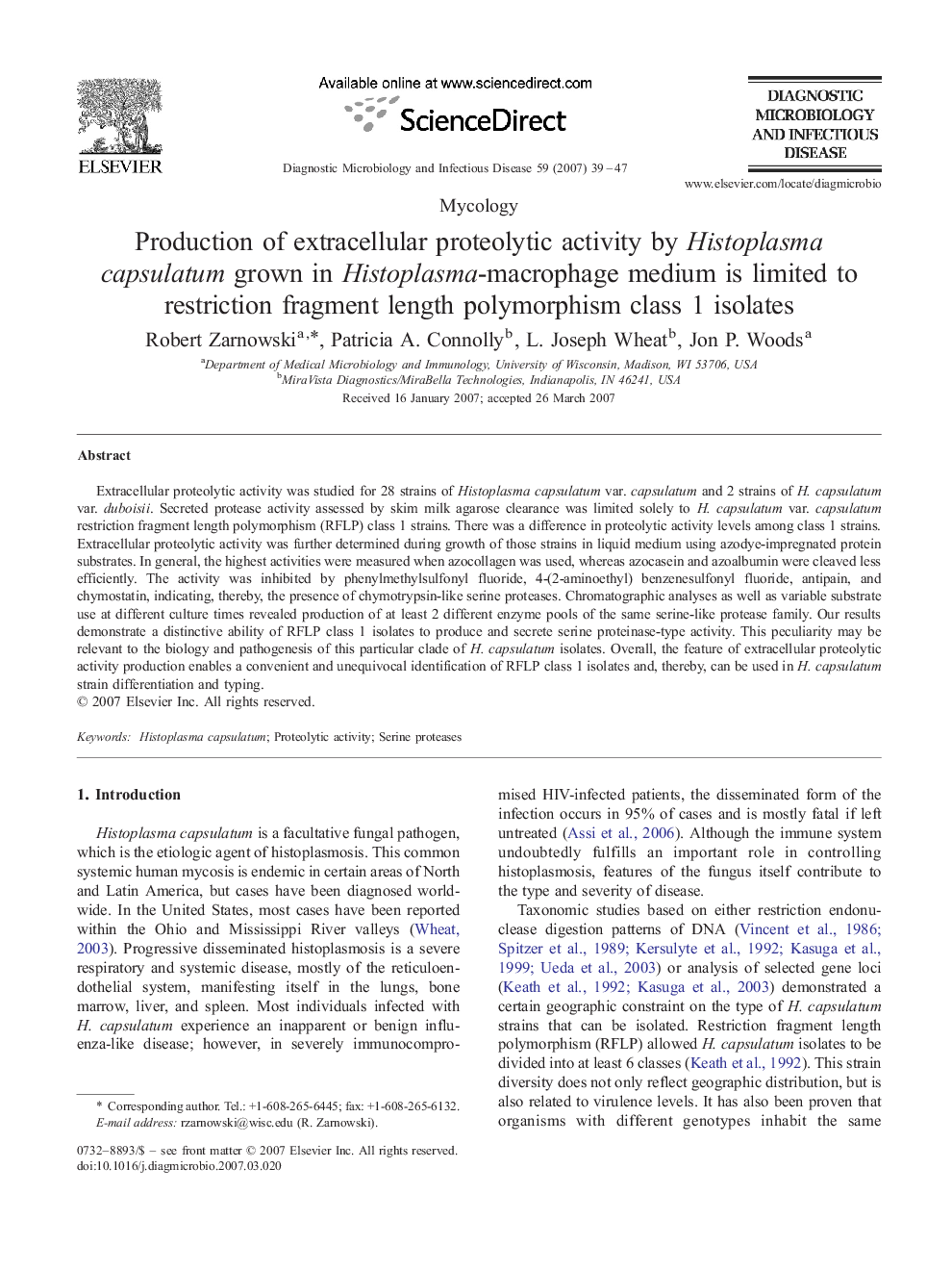| Article ID | Journal | Published Year | Pages | File Type |
|---|---|---|---|---|
| 3348149 | Diagnostic Microbiology and Infectious Disease | 2007 | 9 Pages |
Extracellular proteolytic activity was studied for 28 strains of Histoplasma capsulatum var. capsulatum and 2 strains of H. capsulatum var. duboisii. Secreted protease activity assessed by skim milk agarose clearance was limited solely to H. capsulatum var. capsulatum restriction fragment length polymorphism (RFLP) class 1 strains. There was a difference in proteolytic activity levels among class 1 strains. Extracellular proteolytic activity was further determined during growth of those strains in liquid medium using azodye-impregnated protein substrates. In general, the highest activities were measured when azocollagen was used, whereas azocasein and azoalbumin were cleaved less efficiently. The activity was inhibited by phenylmethylsulfonyl fluoride, 4-(2-aminoethyl) benzenesulfonyl fluoride, antipain, and chymostatin, indicating, thereby, the presence of chymotrypsin-like serine proteases. Chromatographic analyses as well as variable substrate use at different culture times revealed production of at least 2 different enzyme pools of the same serine-like protease family. Our results demonstrate a distinctive ability of RFLP class 1 isolates to produce and secrete serine proteinase-type activity. This peculiarity may be relevant to the biology and pathogenesis of this particular clade of H. capsulatum isolates. Overall, the feature of extracellular proteolytic activity production enables a convenient and unequivocal identification of RFLP class 1 isolates and, thereby, can be used in H. capsulatum strain differentiation and typing.
